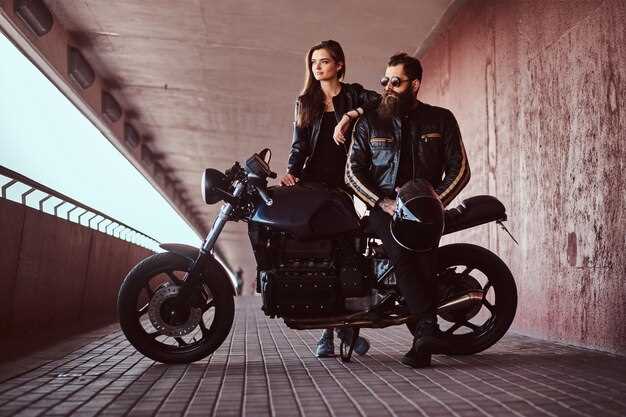
The motorcycle world is rich with various types of bikes, each designed to cater to specific riding preferences and styles. Among these, sport bikes and naked bikes stand out as two popular categories, attracting riders with their unique performances and aesthetics. While both types offer exhilarating experiences on two wheels, their construction, intended use, and overall ride dynamics differ significantly.
Sport bikes are engineered for high performance, featuring powerful engines, aerodynamic designs, and advanced suspension systems. These bikes prioritize speed and agility, making them ideal for track racing and spirited rides on winding roads. In contrast, naked bikes, also known as standard or street fighters, embrace a minimalist design, focusing on comfort and versatility while still delivering a punchy performance. Their upright riding position and exposed components appeal to urban riders who seek a balance between performance and everyday usability.
In this article, we will delve deeper into the performance metrics of both sport and naked bikes, exploring factors such as acceleration, handling, and rider comfort. By comparing these two popular types, enthusiasts can gain insights into which bike aligns best with their riding style and preferences, allowing for a more informed decision when choosing their next motorcycle.
Acceleration Differences Between Sport and Naked Bikes
The acceleration capabilities of motorcycles are significantly influenced by their types, particularly when comparing sport bikes and naked bikes. Sport bikes are engineered with a focus on performance, often featuring higher power outputs and lighter frames. This design allows them to achieve remarkable acceleration and swift speeds, making them ideal for track use and spirited riding.
In contrast, naked bikes prioritize versatility and comfort over outright performance. While they still offer respectable speed, their acceleration is generally less aggressive than that of sport bikes. This is primarily due to their weight distribution, ergonomics, and engine tuning, which seek to balance performance with rider comfort.
When analyzing acceleration data, sport bikes typically demonstrate faster 0-60 mph times compared to naked bikes. For instance, many sport models can achieve this benchmark in under three seconds, while naked bikes may take longer due to their design priorities and power delivery characteristics.
Moreover, the power-to-weight ratio of sport bikes plays a significant role in their acceleration. With lighter frames and more powerful engines, these bikes can utilize their resources more efficiently, allowing for quicker responses and higher initial speeds when the throttle is applied.
Overall, while both types offer distinct advantages and appeal to different riders, it is clear that sport bikes hold a definitive edge in acceleration, offering exhilarating speed and rapid response that caters to performance enthusiasts.
Handling Characteristics in Varied Riding Conditions

Understanding the handling characteristics of sport and naked bikes in varied riding conditions is essential for riders seeking optimal performance. Both types of bikes are designed with specific geometries and weight distributions that influence their behavior on the road.
Sport bikes typically feature aggressive riding positions, with lower handlebars and higher foot pegs. This configuration enhances aerodynamics but can make them less stable at lower speeds. In twisty conditions, sport bikes excel due to their responsiveness, allowing for quick changes in direction and precise cornering. However, these advantages may wane in rugged environments or when facing adverse weather, where the rigid suspension can lead to a harsh ride.
Naked bikes, on the other hand, present a more upright riding posture. This comfortable stance allows for better visibility and control in urban settings, making them ideal for navigating through traffic. The relaxed geometry of naked bikes often results in excellent stability during straight-line riding and a less twitchy feel while cornering. In wet or slippery conditions, their more forgiving suspension systems help absorb bumps and irregularities, contributing to enhanced grip and confidence.
In off-road scenarios or poorly maintained roads, naked bikes tend to handle better due to their robust build and broader handlebars, offering riders more leverage. Conversely, while sport bikes can tackle such conditions, their limited suspension travel may hinder performance and rider comfort.
In summary, sport bikes shine in performance-oriented situations, thriving on smooth, twisty roads, while naked bikes are more versatile, providing greater ease in diverse riding conditions. Choosing the right bike depends on the expected riding environment and personal preferences regarding handling and comfort.
Top Speed Capabilities of Sport vs. Naked Bikes

When comparing the top speed capabilities of sport and naked bikes, several factors come into play, including design, aerodynamics, and engine performance. Sport bikes are engineered for speed and agility, often equipped with powerful engines that can achieve higher top speeds. These bikes typically feature a more aerodynamic fairing, which reduces wind resistance at high velocities, allowing riders to reach speeds exceeding 180 mph in many cases.
Naked bikes, on the other hand, are designed for versatility and comfort, with a more upright riding position and minimal fairings. While they are often equipped with capable engines, their top speeds generally fall behind those of sport bikes. For instance, a typical naked bike might reach a top speed of around 130 to 150 mph, which, while impressive, does not match the extreme speed of their sport counterparts.
The difference in speed capabilities can also be attributed to the weight and handling characteristics of each type of bike. Sport bikes tend to be lighter and more focused on high-performance riding, allowing for quicker acceleration and better handling at high speeds. Naked bikes, although they may not reach the same peak speeds, offer a more relaxed riding experience that can be beneficial for everyday use and urban commuting.
Overall, while sport bikes dominate the top speed category with their high-performance engineering, naked bikes provide a balanced approach that emphasizes versatility over sheer velocity. Each type of bike serves its own purpose, appealing to different rider preferences and styles.
